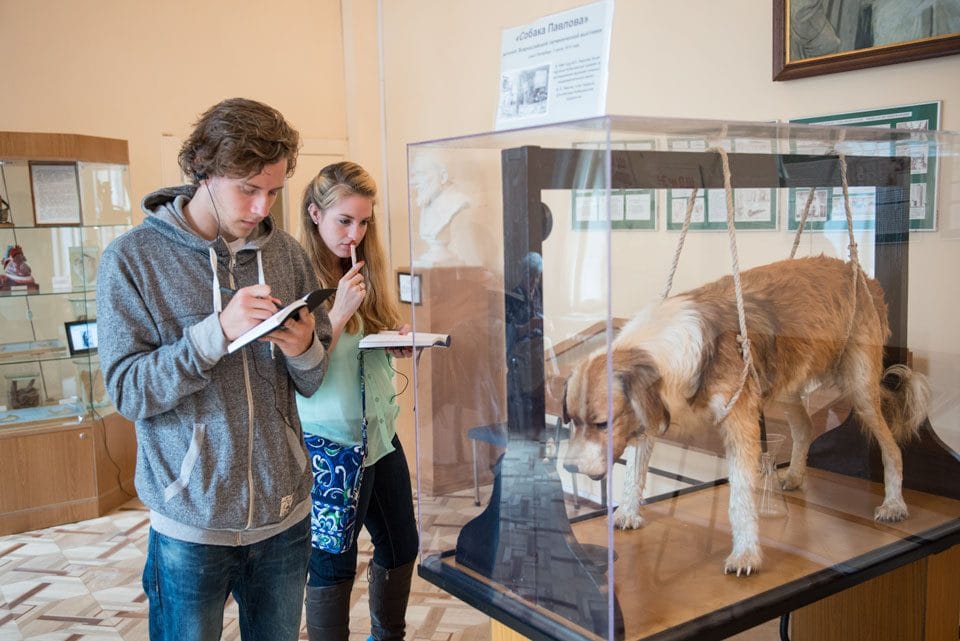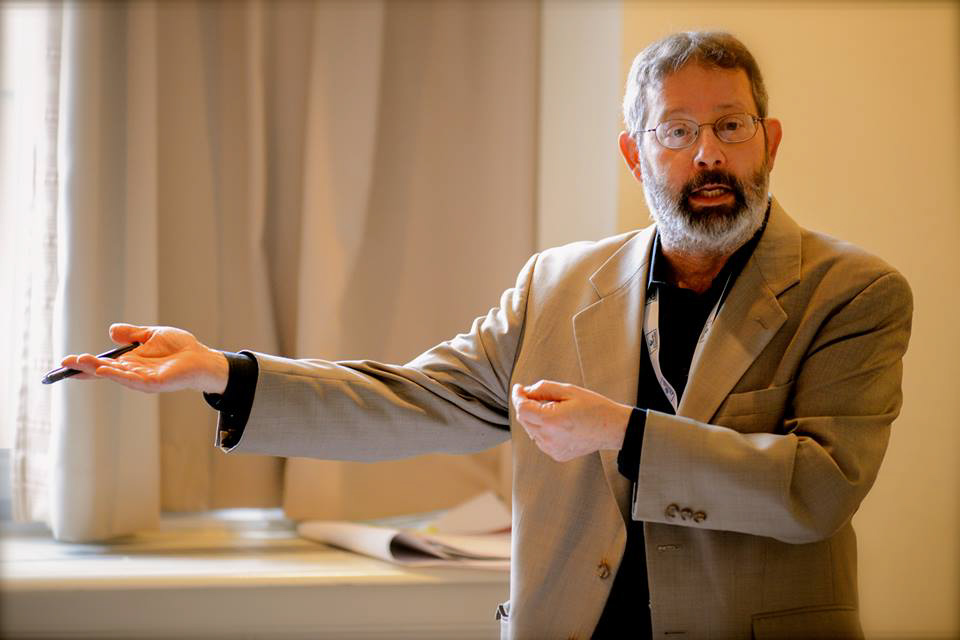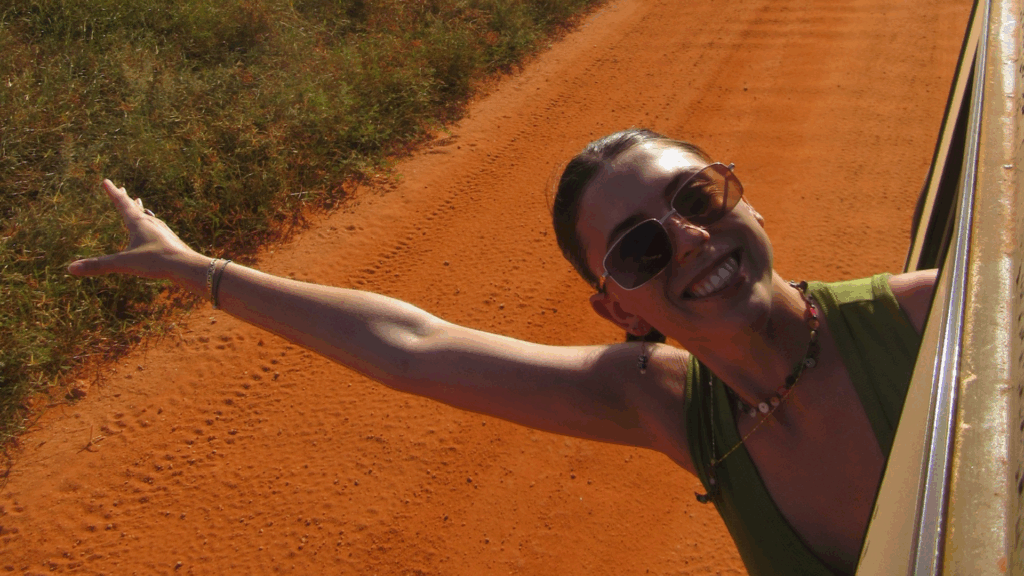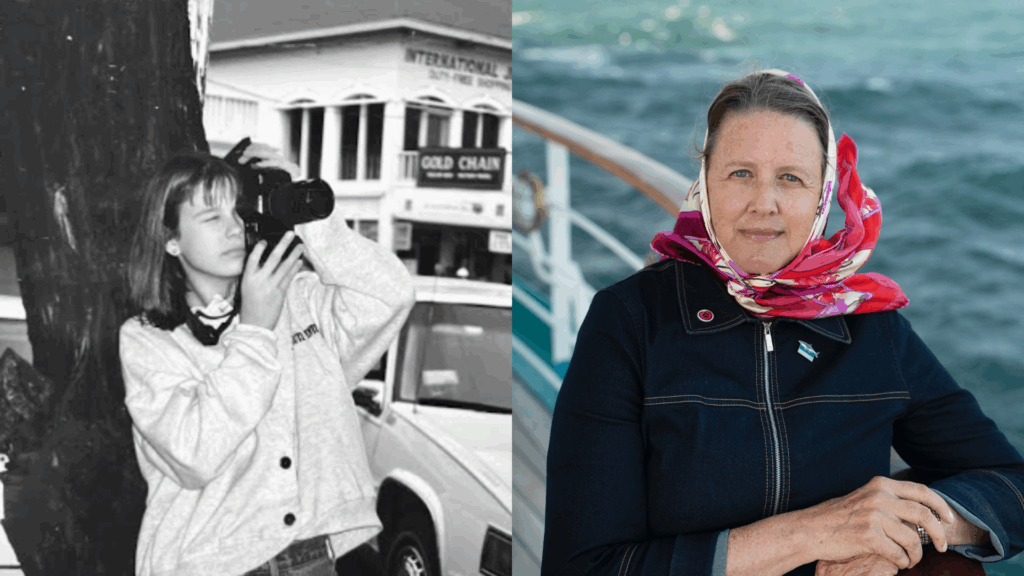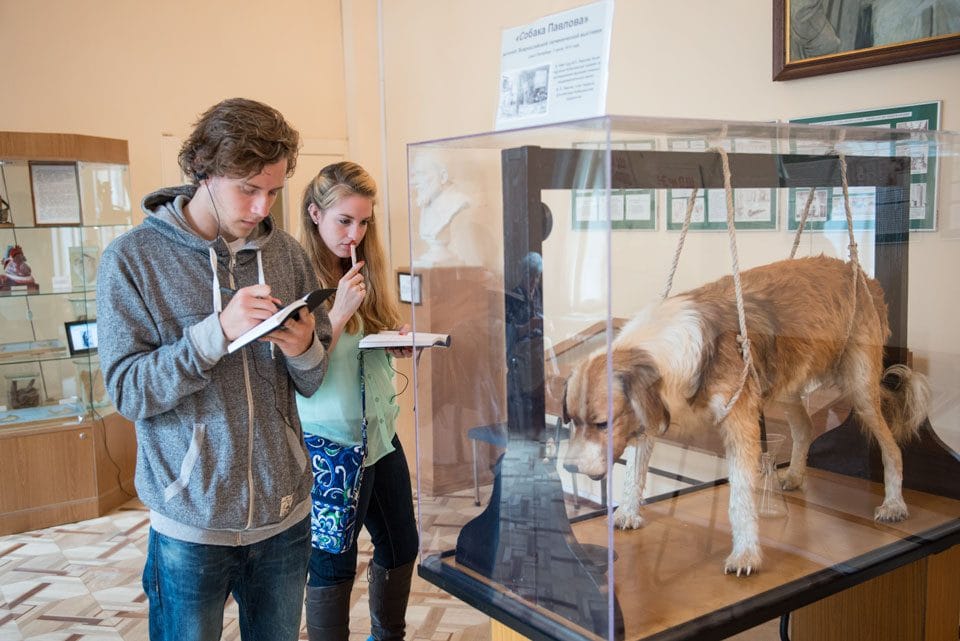
Students in Sarah Sloane’s travel writing class, one of three on the Fall 2013 voyage, took her students to several out-of-the-ordinary museums to inspire their creativity to practice three styles of writing they're learning in class during their academic field lab in Russia.
“The museums were selected to complement the mainstream observations the students would get from more traditional locations. I wanted to demonstrate that there are other places to observe and examine culture besides the typical areas,” said Prof. Sloane, who teaches writing at Colorado State University.
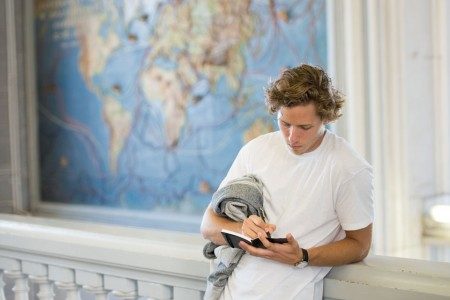
As part of the field lab students were to write three short travel pieces: humorous fiction, a guidebook entry, and a personal narrative that connects with factual events and reflections and could be printed in a newspaper.
And what better way to find inspiration than some of the most curious museums that St. Petersburg had to offer.
“There was plenty of material to write about, and [visiting the museums] evoked a sense of adventure and curiosity,” said Daniel Glunz, a junior at the Univ. of Colorado-Boulder. Daniel said he took Prof. Sloane’s class to “better express my experience. I enjoy writing and this is a good place to be inspired to write.”
Among the “inspiring” places Daniel and his class visited in St. Petersburg were the Museum of Hygiene, which included Pavlov’s dog, stuffed, in the position as he would be during the experiments, the Zoological museum, home to hundreds of stuffed animals from nearly every species, and the Kunsterkamera, or Peter the Great’s Museum of Oddities and Curiosities.
“Many students seemed a bit shocked by what they saw” at the Kunsterkamera, Prof. Sloane said. “It was stranger than my class or I expected.”
The purpose of Prof. Sloane’s field lab was to teach students about immersion journalism and apply its principles to their work. She selected lesser-known, non-typical museums to take students out of their comfort zones to get them writing about things that are unfamiliar.
“This is when you throw yourself into the situation and you’re part of the experience instead of just observing it,” said Prof. Sloane. “Russia was so exotic with the Cyrillic alphabet and so far from home and a very different culture from ours. I wanted to provide a location that allowed the students to explore cultural differences,” she said.
No doubt, says Daniel, that the field labs certainly will lead to some interesting writing assignments.
